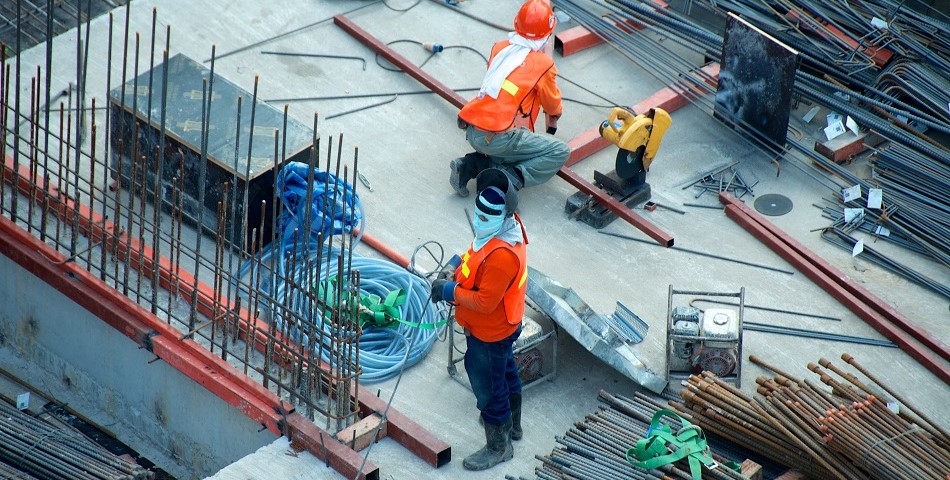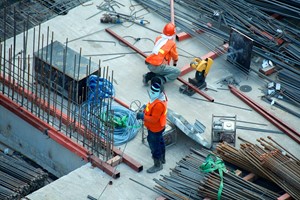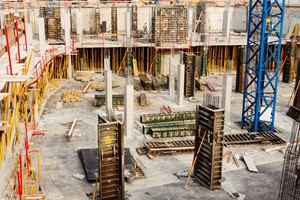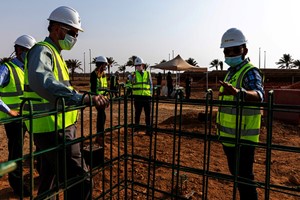The UK construction industry has had a hard time over recent decades. After experiencing a period in the doldrums, it has since had to face the uncertainty of Brexit, as well as having to cope with the Coronavirus pandemic. However, could brighter times now be on the horizon?
While lockdown restrictions are eased and the sector is boosted by a £1.3 billion government investment to build new houses, we look at how the future of construction is finally seeing better days ahead.
The early signs of a recovery?
Looking for an early marker of economic recovery in the construction industry, many look towards improvements on the HIS Markit/CIPS Purchasing Managers’ Index (PMI) rating. Used to highlight global economic trends in the manufacturing and service sectors, June’s record jump of 11.4 index points was a five-month high—and a statistic that shows a correlation between lockdowns easing and economies starting to recover.
However, as the global index indicates improvements across a wide board, not just the UK, we must investigate the domestic situation to unveil the true state of the country’s current construction situation.
According to the Office for National Statistics (ONS), construction output in the UK fell by 40% in April this year, following lockdown restrictions that have created a 38.1% fall in repair and maintenance works and a further 41.2% decrease in new work.
These are representative of the biggest drops since records began a decade ago, leaving behind a financial hole of £5.1 billion to recover. May’s figures show a small sign of improvement for construction output, with an 8.2% increase—compared to April’s figure—being accredited to the easing of lockdown restrictions.
Recent publications show a steady recovery for the industry, with a record 23.5% growth in output in June. While this still falls behind pre-lockdown figures, it does indicate that there is some reason for optimism in the sector.
Although the ONS does admit the difficulty in portraying if the pandemic has been solely responsible for the damaging results, there is growing anxiety of how future outbreaks will affect the industry.
Government help …
Housing Secretary Robert Jenrick announced that the government were attempting to fill the £5.1 billion hole caused by the reduction in output by approving thousands of infrastructure and housing projects with a sturdy £1.3 billion investment. The move is part of the government’s plan to deliver upgrades to local infrastructure and boost skills to help trigger a green economy recovery.
The aims of the investment are clear. With 45,000 new homes, the creation of 85,000 jobs, and a reduction of 65 million kilograms of CO2 emissions in England. It’s a perfectly timed boost for an ailing industry desperate for a helping hand to kickstart its recovery.
The health and safety aspect
Of course, the recovery will take time if we expect to see the same level of productive output as before the pandemic, but it’s important to remember how the easing of restrictions will affect the people returning to work in construction—and how their health and safety takes priority.
Where the normal health and safety regulations will always be made to ensure the wellbeing of workers, the virus has added the pressure of social distancing and hygiene guidelines to contend with. The focus on worker safety has never been greater.
One piece of legislation that ensures the safety of workers and buildings is the Building Safety Bill, which regulates building practices but also ensures the building is safe after it has been completed. Another, the Construction Leadership Council’s Site Operating Procedures during Covid-19 are aimed at protecting workforces from the virus.
The first is known for its significant introduction following the Grenfell Tower tragedy, and the second will continue to be reviewed. The guidelines have already had five iterations, with plenty more issues to be produced if the pandemic continues to change at a speed that feels like it’s overnight.
Both are intended to improve the working conditions in the construction industry, and they’re important for progressing the industry beyond lockdown and into the future.
These documents are not technically connected, but they exist to be used together. Without the Safety Bill, you run the risk of unsafe buildings being built in a dangerous way, and without the guidelines for working during Covid-19, you can’t implement the new ways in which buildings have to be built, all the way from design to completion.
After all, the workers and the workplaces are at the centre of this issue. Life on a construction site can be challenging. It’s less about collaborative working spaces and more using the land in which the building is being built on.
Essential on-site facilities need to be considered and planned during construction projects. Many sites will hire a storage container which can be versatile and are often used as offices, canteens, drying rooms, toilet blocks, and for storage—all in varying sizes and layouts.
But the close proximities of these sites makes it difficult to organise social distancing measures for staff, especially with the threat of closure if the guidance is not adhered to.
Fortunately, industry experts have launched a course that can ensure staff can stay safe during the pandemic. CovCert is an online programme designed to provide employees with an understanding of how to work safely and minimise the risks from Covid-19.
Construction workforce specialist Sphere Solutions and industry expert Green Hat Consulting have collaborated on the initiative. It intends to educate and ensure that construction sites continue to be safe and compliant.
Discussing the course, Andrew Warring, managing director of Green Hat Consulting, said: "CovCert is aimed at employees who are returning to work on construction sites. The courses are intended to raise Covid-19 awareness and provide employees with the knowledge required to minimise the risk of transmission and infection within the workplace, as well as providing an induction for new employees and informing on up to date guidance."
This should help those who are anxious of returning to the workplace to be more confident of how it can be made safe and another step towards returning to the normality we knew before lockdown, benefitting the company they work for and the project they’re working on.
There’s still a lot of work to be done to combat the uncertainties in the industry, whether it is because of the virus or Brexit. But the slight indications that show a positive trajectory for the industry is cause for optimism. With such an unpredictable landscape for the world of construction, it’s important that small steps are made as frequently as possible to avoid another decade in the doldrums.
Mobile Mini














